Red Fox Behaviour - Evolution of Group Living
If foxes have evolved to hunt solitarily for small prey, why do we sometimes find them living in groups? Do they hunt in packs for larger prey?
Pack hunting in foxes?
Despite some spurious stories in the tabloids in recent years there is no evidence that foxes hunt in packs. That said, there is a curious event that Northumberland-based naturalist Henry Tegner recounts in his 1954 book The White Foxes of Gorfenletch. He describes an incident in which four foxes -- a vixen with two cubs from previous spring and a big, dark dog fox -- 'pack hunted' a Roe deer buck during a harsh winter in the Northumberland hills.
The group apparently stumbled across a young Roe buck resting against a rhododendron bush and the vixen crouched down "... her brush twitching to and fro in her excitement. Creeping nearer and nearer towards the buck, the vixen paused whenever the roe turned his head in her direction." During the stalk the other foxes, all working on their own, closed in on the deer and the buck didn't see the vixen until she was within six feet of him. Tegner noted:
"As if at a given signal, all four foxes suddenly sprang towards the young roe. The buck jumped up untouched." The deer bounded off over the snow-covered moor, but Henry noticed the deer faltered every now and then in its stride, suggesting a shoulder injury. "The foxes hunted him like a pack of hounds."
The deer bounded off over the snow-covered moor, but Tegner noticed the deer faltered every now and then in its stride, suggesting a shoulder injury. "The foxes hunted him like a pack of hounds" writes Tegner and, as the light began to fade, he watched the foxes silhouetted against the snow as they pursued the Roe buck towards a fir wood. He went back the following morning, tracking the hunt with his terriers, and reconstructed (with an questionably detailed degree of accuracy) the scene from the tracks in the snow.
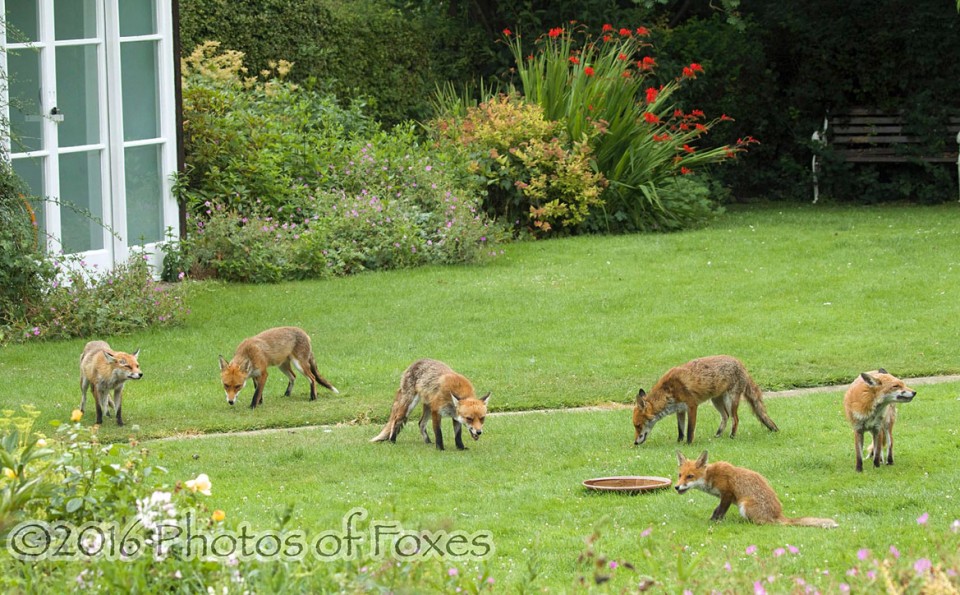
"The vixen had held the young buck's attention by crouching before him. The big dog had come in on a flank, grabbed the roe's hind leg in his jaws and held on whilst the others rushed in for the kill. There was a good deal of blood on the snow. All that was left of the buck was a few shreds of skin and scattered bones."
Tegner suggested that foxes are driven to pack-hunt only when winter conditions get very bad.
Henry Tegner was a naturalist and former chairman of the British Deer Society, which suggests his testimony should be reliable, but given that foxes are fairly small canids with small stomachs and comparatively weak jaws, the above series of events seems very far-fetched. As far as I am aware, there are no other confirmed reports of pack hunting in foxes and it has certainly never been filmed, despite the our comprehensive understanding of the Red fox's natural history in Europe. There are, however, very occasional reports of cooperation between foxes. Australian biologist Alan Newsome, for example, reported a dog and vixen working together to catch large rabbits. In addition, during February 2010 I received a fascinating e-mail from a keeper in the hills of Northern Ireland. The gentleman described how he came across two adult foxes attacking a mature ewe with a prolapsed uterus.
Ultimately, Red foxes are solitary hunters and, even where they live in social groups, they invariably hunt alone. That said, as they get older cubs will often follow an adult out as they learn what to eat and where to find it. Cubs that are almost fully grown seen with their parents can often give the impression of a pack of foxes on a hunt.
Resources and group living
Despite the lack of pack-associated hunting in foxes, the answer to how group-living arose does, nonetheless, seem to involve resources and, more specifically, an abundance of resources. Professor David Macdonald spent a great deal of his time pondering the question of how group-living evolved in Red foxes. He noticed that, generally speaking, food is unevenly distributed within a given area (territory) and its availability varies ephemerally; from night to night, season to season, year to year, etc.
The basic premise of Macdonald's idea is that a fox (or pair of foxes) establishes a territory large enough to supply it with sufficient food during the hard times, when food is scarce. Logically, it follows that this area will most likely provide more food than the dominant pair need during the "good times". This "surplus" food could support additional foxes and, provided having these extra bodies on the territory doesn't cost the owners anything (i.e., they don't go hungry), blood relatives may be permitted to live on the territory. When food gets scarce again, and the "hangers on" start imposing a cost on the dominant pair, they're forced out. This concept is known as the Resource Dispersion Hypothesis (RDH) and seems to explain group living in foxes (and many other carnivorans) nicely.
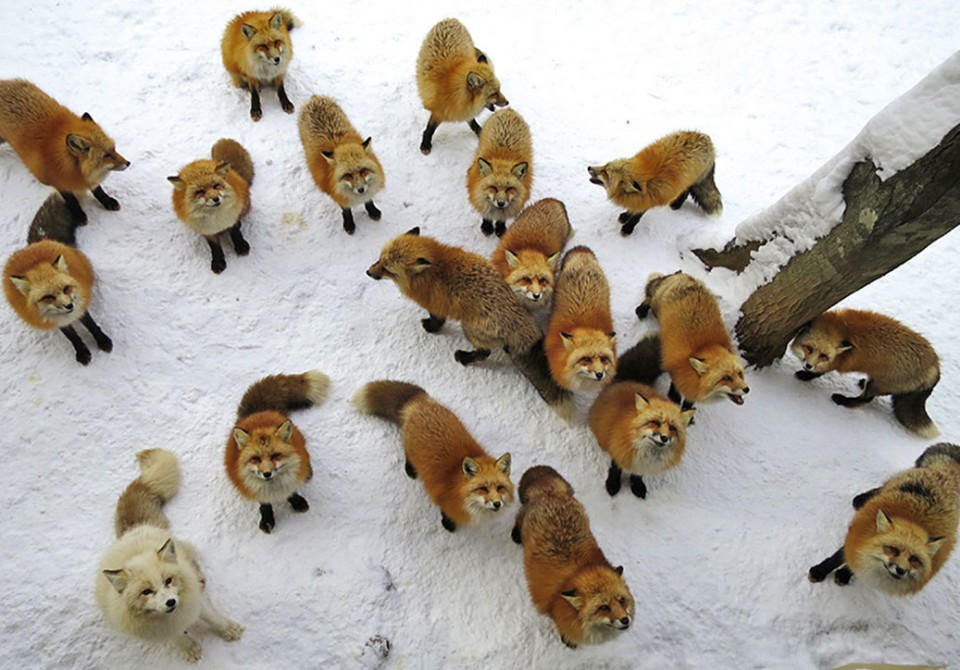
There are some cases where the basic premise of the RDH requires a slight modification in order to explain an observed situation and a good example of this comes from the group-living foxes of Bristol city. Professor Stephen Harris and his colleagues at Bristol University's Mammal Research Unit (MRU) have found that group living in these foxes is only partially consistent with the RDH or, more specifically, an additional concept needs including.
Harris and his co-workers found that, in some cases, territory owners defended areas larger than was necessary even if they were planning for the hard times; i.e., even in bad times, the territory would still provide more than sufficient food for the pair. In two instances a territory was split, with the parents effectively giving half to their daughter. The suggestion is that foxes may opt to defend territories which are larger than absolutely necessary, provided the costs of maintaining larger areas (energy lost patrolling it, injuries sustained fighting with intruders, etc.) are not too high. This would provide the foxes with additional food security and would mean a given territory could support more than just the dominant pair more often than just during periods of abundant food -- indeed, in all but the absolute worst times. Harris and his colleagues call this the non-minimal territory theory (NMT).
In the end, it is the availability of resources within the territory (be they ephemeral or constant) that dictates whether additional foxes are tolerated. It may not, however, be the whole reason, particularly when it comes to explaining why vixens are generally tolerated but other dogs are not.
Gregarious vixens?
I have mentioned that social groups are usually composed of blood relatives (brothers, sisters, cousins, etc.), and in the vast majority of cases these are females: a group typically comprises a single dominant dog fox and dominant vixen along with several (four or five is not uncommon, and ten is the largest number of adults found in a single group in Bristol) subordinate vixens from previous litters. Indeed, Stephen Harris has argued that Rohl Dahl missed the point with Fantastic Mr Fox; instead it should be "Fantastic Mrs Fox", as the dominant vixen is the most important animal in the group, being the reason for group cohesion. During the course of his studies in Oxford, Macdonald found that only very occasionally did more than a single dog co-habit and he never found any evidence of vixens successfully emigrating into an existing group (suggesting a familial relationship within the group).
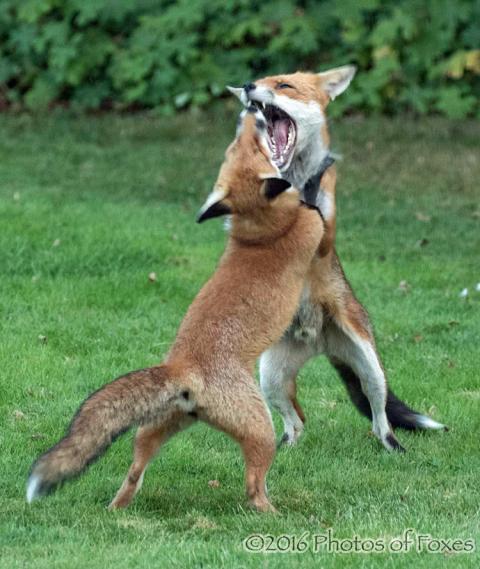
Harris and his team found that, although multiple dogs in a group was unusual -- typically only about one-fifth (20%) of social groups Stephen Harris and Graham Smith monitored in London and Bristol during the 1970s and 80s contained more than one dog -- it was more common when the fox population was large; at high densities, they found subordinate males to be as common as subordinate females in social groups. The MRU biologists also found that older females that had previously been dominant sometimes remained within the group as non-breeding subordinates. In his contribution to the 1980 Biogeographica volume on Red fox ecology, Freek Niewold noted that vixens were tolerated to a much greater extent than dogs. Niewold described how:
"A remarkable situation was created by closely related females (mother and daughter) who were occupying adjacent territories. Although the males were clearly separated, the females could freely visit each other after the division of their former common territory."
While there are many examples of related females living together, or nearby, without any apparent animosity, there are also examples of dominant vixens violently expelling their daughters from the territory, particularly when she is raising cubs. Thus it seems that females are very flexible in their tolerance of one another. By contrast, however, it seems that aggression between males is endemic and various observations suggest that as the male cubs reach sexual maturity they are generally chased out of the group by the dominant dog, who presumably sees them as reproductive competition.
This probably also serves to prevent inbreeding within the group (mating with close relatives), which ultimately improves the genetic viability of the population. Indeed, recent work by Eli Geffen at Tel Aviv University and colleagues suggests that, among canids, pack members are typically excluded as mates, although individuals may pair indiscriminately (i.e., irrespective of relatedness) outside of their natal group regardless of kin encounter rate. In other words, if the other animal is a member of their group, mating is automatically prohibited, while any animal is a potential mate (regardless of whether they're related) when encountered outside the social group.
Should I stay, or should I go?
While the RDH and NMT hypotheses provide a good basis for explaining why offspring may be tolerated in a typically solitary species, it doesn't tell us why the foxes want to stay. This is an even more interesting question given that we know subordinate vixens rarely breed (even if they do mate they rarely give birth; see Breeding Biology) as their breeding is suppressed -- both behaviourally (by physical attacks) and hormonally (through the production of stress hormones) -- by the dominant vixen in the group. Initially it may seem that the best option for a sexually mature fox would be to leave the family group and set off in search of a territory in which to raise their own family; this is, after all, what genes drive their hosts to do - leave the family fold and spread copies into subsequent generations (this is called dispersal). Given that most foxes living in urban areas will only live through a handful of breeding seasons, it would seem that the clock is ticking to get their genes out there.
It seems that a crucial factor in determining dispersal is the local fox density. If the area is "saturated" with foxes (i.e., the population density is high and there are very few, if any, available territories) foxes have to travel further afield looking for a territory of their own. This travelling uses a lot of energy and presents many challenges, including the risk of injury or death when fighting with another fox for a piece of land. Indeed, a study led by MRU biologist Carl Soulsbury, published in Behavioural Ecology and Sociobiology during 2008, found that dispersing foxes received more serious bite wounds than non-dispersing animals. Soulsbury and his colleagues also observed that while vixens were more likely to become dominant if they left home, males were no more likely to attain dominance if they dispersed than if they stayed on the natal territory.
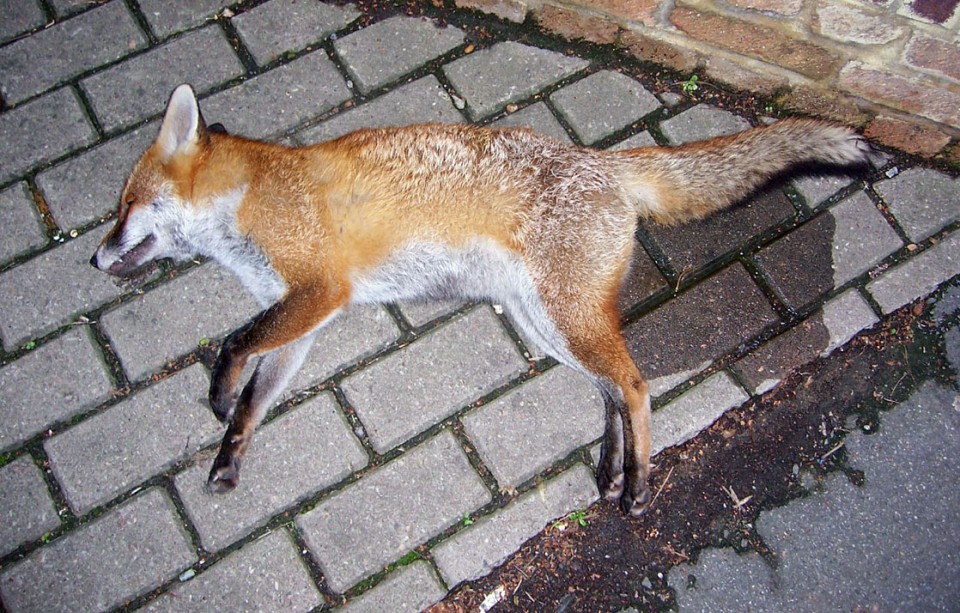
In some cases offspring may inherit the territory from their parents, or forcibly push them out, but this is by no means guaranteed and thus cannot be relied upon as a breeding strategy. It may sound from all of this like foxes sit there and weigh up the pros and cons of leaving home compared to staying at home but of course, they don't; these are just the biological processes driving what is innate behaviour. Instead, they stick around (because they generally enjoy the company of their family members) until they get that 'urge' to move on (often driven by the desire to breed) or are kicked out by their parents.
So, a fox may choose to remain on the natal territory to reduce the costs (dangers) associated with striking out on its own, and this is particularly likely when the local fox density is high and space at a premium. Indeed, tracking studies suggest that a fox will make several exploratory trips away from the territory before dispersing, during which it is presumably checking the local fox density (see Behaviour - Dispersal). Choosing to stay at home, rather than dispersing, is known as philopatry. This is not, however, the complete picture and there are other benefits that both the philopatric fox and dominant pair may gain.
For the dominant pair, having your offspring hanging around might offer support defending the territory, although the present evidence suggest that subordinates don't engage much in this behaviour. Alternatively, if the kids are going to stick around, they could help with the chores -- more specifically, they could help "babysit" any subsequent litters. To the philopatric individual, staying at home may extend their life expectancy, and there's the potential to learn from your parents or at the very least be in better condition come dispersal time. Before we look at the possible benefits of philopatry, however, we must address a question: If the fox's genes are driving their spread into future generations, how can we reconcile an individual foregoing breeding?
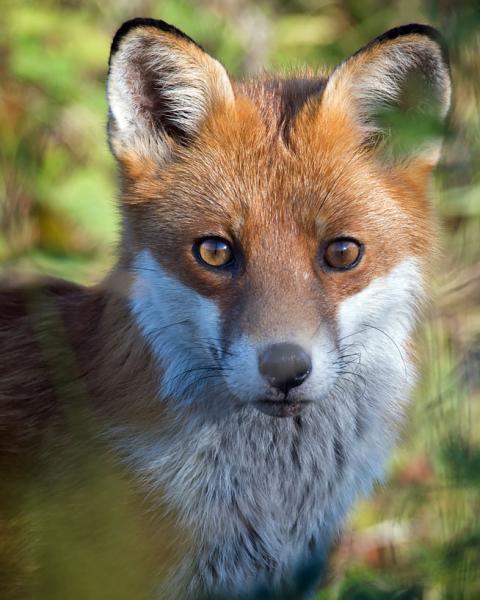
Kin selection - gene-sitting duty
In evolutionary biology, there is a concept -- originally proposed by Charles Darwin in his The Origin of Species and later popularised by the eminent ecologist William D. Hamilton -- called Kin Selection. Kin selection is quite a complicated topic and I don't want to go into much detail on it here, but readers interested in learning more are directed to Chapter Six of Richard Dawkins' 1989 book The Selfish Gene for an authoritative and easy-to-read treatment of the subject.
Essentially, kin selection suggests that individuals have a vested interest in the survival of not only their own offspring but also those of their close relatives (brothers, sisters, nieces, nephews, etc.), because they share common genes. The result is that, by caring for your brothers and sisters you are helping to ensure that at least some of your common genes make it into subsequent generations. Thus, a philopatric vixen pays the cost of not being able to breed but in return she can potentially gain the experience of helping to raise her brothers and sisters in subsequent litters (which may put her in better stead if she has her own cubs one day) and, at the same time, by helping to ensure her relatives survive, she is helping to ensure that some of the family genes -- many of which she is also carrying -- survive.
To those unfamiliar with evolutionary theory this may seem a little farfetched and they perhaps imagine foxes doing calculations to work out the genetic relationship of a particular cub to themselves before deciding whether to feed it. Foxes do not, of course, know anything about this process; it all happens subconsciously, having been programmed by the animal's genes before birth. The process of kin selection is realised in foxes through emotions that we refer to as love or affection, not mathematics. It does, nonetheless, have the same effect.